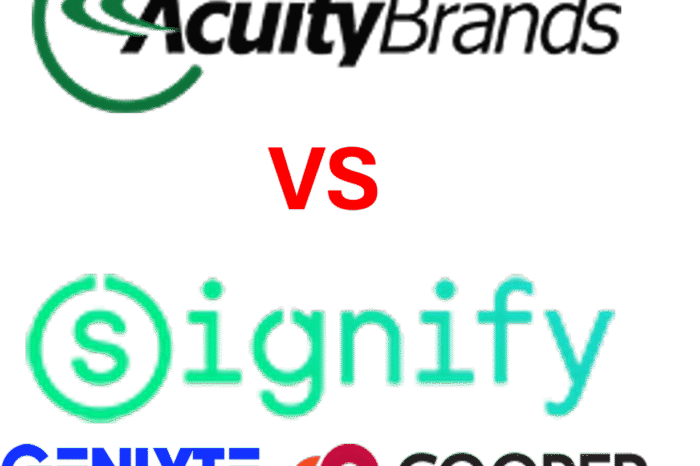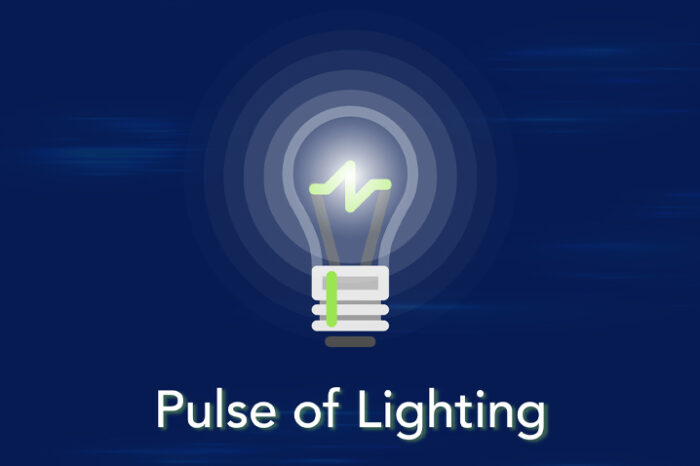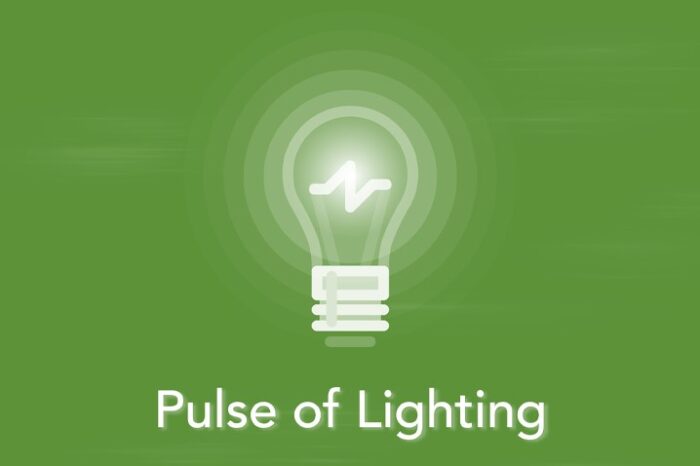Acuity Q3 and Lighting Market Info
 Last week Acuity Brands announced their Q3 earnings and, while good, only share a portion of the lighting story. As a distributor, if you’re having a “good” year it’s because your lighting business is probably up double digits and your sales of “non-big 6” manufacturers is up significantly while you’re winning your “unfair share” of large projects.
Last week Acuity Brands announced their Q3 earnings and, while good, only share a portion of the lighting story. As a distributor, if you’re having a “good” year it’s because your lighting business is probably up double digits and your sales of “non-big 6” manufacturers is up significantly while you’re winning your “unfair share” of large projects.
But first, let’s look at the highlights from the Acuity earnings call: (italics are CMG comments)
- Net sales almost $900M, an increase of 5%
- Feel that the industry grew 2% while they were up 6% in US (difference between 5% and 6% is price changes and currency issues)
- Record quarterly margin
- Purchased 2M shares of common stock on the open market (the price of the stock had dropped considerable after Q2 earnings “disappointed” Wall Street)
- Seeing large projects move along “nicely” and orders / quotations are very positive for medium to larger projects.
- Companies taking a “wait and see” approach on stock / flow orders and “don’t know why?” (according to distributors CMG talks to, a major issue is the rate of new products, price erosion and the reluctance to wanting to get “stuck” with unsaleable product when the new product is introduced .. and the manufacturer doesn’t want to take it back.)
- Mentioned that “stock inflow ,,, is probably in the 20% range (question becomes, what is their goal? As a distributor, what % of your fixture sales are stock? How has this changed? And is the change conscious?)
- Interesting that, when talking about impact of price mix and the mix of products sold Acuity said “we estimate the impact of price mix was primarily due to changes in product price, primarily for more basic lesser featured LED luminaire sold in certain channels (potential translation … products are being commoditized and others are selling cheaper and distributors / contractors are buying on price and, at least some, don’t value ‘value-added’ features and/or brand to pay premium pricing. This also explains why other “Tier 2” and “Tier 3” companies are experiencing higher growth rates and why distributor lighting sales are increasing at a rate higher than most of the large manufacturers.)
- There was mention of “reduc(ing) cost for certain basic, less differentiated product families to maintain our competitiveness and expected profitability. (so they are recognizing they are losing share in some product types for certain types of “projects / stock” applications. Presumably losing share to smaller, more price focused competitors whom the market feels has “sufficient” product quality and where brand name is not a top 2-3 decision-driver. Another major lighting manufacturer recently launched a “lower level / contractor grade” product line to address the same issue.)
- Overall market demand remained soft particularly for short cycle projects and shipment information from US Census Burea and NEMA were mentioned. (Challenge with NEMA as a data point is that not all, in fact probably most, lighting manufacturers are not members of NEMA and do not share sales or shipment information with NEMA, and NEMA data is self-reported for shipments to all channels and hence not a barometer for electrical / lighting distribution activity unless it is a manufacturer’s sole channel. We’re hearing that small projects are a significant growth opportunity for distributors but at declining $/units and declining GP$/unit sold due to fixture price decreases … competition.)
- LEDs are now 66% of net sales, which includes non-fixture sales, so LEDs are a higher % of lighting fixture sales
- Gross margin is 42.5%, down from 44.5% a year ago due to supply chain costs, inclusive primarily of freight costs.
- IoT related initiatives are now 13% of total sales (this is significant as it indicates some adoption, however, in talking to distributors these sales are marquee projects and are driven by Acuity and sometimes by the lighting agent. Gaining mass-market adoption will require new initiatives to support and train distributor specialists (and key salespeople) while providing them advanced marketing and sales tools / training. Some distributors are adding lighting control specialists to differentiate themselves in their markets. The other challenge for distributors is identifying, or negotiating, how they can benefit from the potential of a longer tail revenue stream (subscription / software / monitoring revenue) and what software they may be able to develop or sell into the system.)
- If distributors don’t play in this space, it could be lost to electronic distributors, commercial integrators, building management / control distributors and service providers, direct sales organizations and others.
- A number of these types of projects have a long sell cycle then a pilot test cycle before a larger rollout. (Due to the sales / testing process, distributors need to consider if they have the right type of sales force to be able to pursue this market. If they don’t, companies like Acuity will either need to go direct (which they are currently doing) or seek channels that are more accustomed to a strategic selling approach and calling on other than maintenance, purchasing and/or contractors.)
- View themselves more as a “technology company”, at least from a financial metric viewpoint.
- Feel total growth for lighting fixture market will be low single digit range for the rest of 2017 due to softness in demand, especially for smaller projects. (interesting. Distributors, do you agree? How is your backlog? Are LED fixture stock sales growing or is the mixed changed to more project? What % of your total fixture purchases (or sales) is Big 6 vs rest of companies and how has that changed over the past 3 years?)
- Expected higher growth in 2018
- Continuing to invest heavily to develop / offer differentiated products and services for the future.
- Look for Acuity’s Atrius platform to receive much attention in the future as a data collection / network platform powered by a lighting system (and who knows, Acuity could get into acquisitions that bring them into other channels more deeply)
- Interesting comments regarding the ability to upsell to Atrius by pre-selling nLight, enabling customers to prepare for tomorrow while managing their “today” budget. Requires skilled salesmanship and marketing as well as development of systems to track where product is installed. Consider this “lifecycle” marketing as well as understanding key vertical markets and applications.
- Acuity is generating subscription revenue (question … what is the model for sharing with a distributor when / if a distributor participates in that sale or it is part of a project that the distributor sold? What is the model for the lighting agents?
Lots of interesting insight from Acuity’s perspective. Over the past few weeks CMG has participated in a number of calls with others in the lighting industry. Others’ input included:
- PoE is gaining some traction according to lighting designers. While it is a small percent of the market (and maybe not even a measurable percent), it is growing. Much of the sales in this segment is from companies selling direct. There appears to be little distribution participation. Perhaps these companies are also pursuing other, more electronically versed channels (electronic distributor who already represent Cisco?)
- The declining pricing of fixtures, in the words of one manufacturer, are leading companies to “commit suicide faster and faster” for smaller companies. He was referencing that if there isn’t margin, companies cannot survive.
- A distributor commented that his reps are telling him “give me a chance to quote, I’ve been told ‘not to lose an order'”
- A number of lighting designers were asked to rate the top companies. Their ratings, unanimously, were Acuity, Eaton Lighting Solutions, Hubbell Lighting, Philips Lighting and Cree. Granted this was a small sample set of 6-8 individuals on a call. Cree was mentioned for its outdoor / street lighting.”
- All designers said “lighting agency is key”
- Philips was reported as “in flux” and recently having laid off a number of salespeople as well as customer service / support staff.
- IoT appears to be “much talk”. A concern was that it isn’t being integrated, currently, into Code (electrical) discussions which could significantly accelerate sales. It was felt that there could be significant adoption in the resi market through other channels and possibly for larger projects (which benefit from manufacturer involvement) but the small to mid-sized commercial market will lag.
- All short-cycle business is subject to commoditization; inexpensive product is flooding the market.
- We’ve spoken to manufacturers who are up 12-17%, one is up 34% with a national chain and another reported up 50% in Q1; distributors who are up mid teens to 41%!
It’s a very active market that needs to be proactively managed to capture share and ensure profitability. It requires ongoing training, marketing, inventory management, price management and negotiation, supplier due diligence / qualification and personnel resourcing. Lighting, and controls, are product categories that are driving industry growth and can differentiate a distributor within their marketplace … if well marketed. From a manufacturer viewpoint, the key is determining what your value proposition is and to whom. If you’re one of the big 6 (Rab is included in this), end-user focus / being easy to do business with and your scale can support growth … if you are consistent. Not one of the big 6 then need to determine why someone should support you “for that project” … it’s all about getting “at bats” and touching the point of influence.
How are you seeing the market? What is your experience?
And we haven’t touched on the lamp market!
And if you were an Acuity distributor, are you participating in their IoT initiatives? The subscription revenue?






















